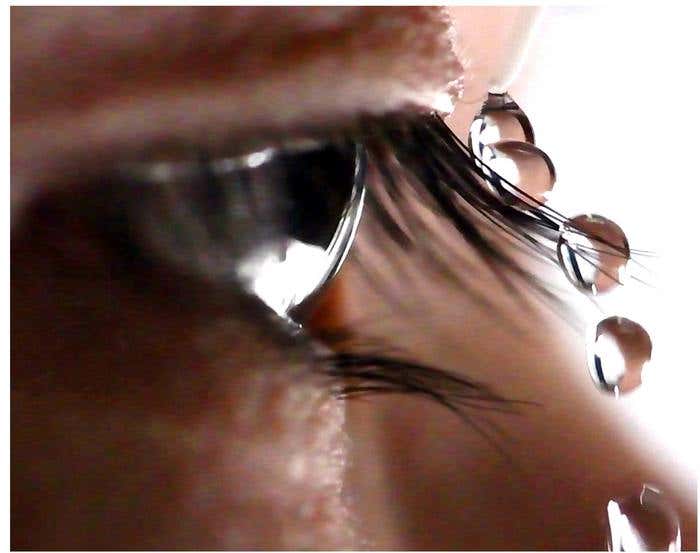‘Spray-on’ nanomaterial revolutionizes flexible electronics
This cutting-edge material, zinc oxide, could play a significant role in the future of technology, including mobile phones and computers

[May 8, 2023: Staff Writer, The Brighter Side of News]
This cutting-edge material, zinc oxide, could play a significant role in the future of technology, including mobile phones and computers. (CREDIT: Barcroft Media via Getty Images)
An international team of scientists is making waves in the technology industry with the development of an inkable nanomaterial that could potentially be used as a spray-on electronic component for ultra-thin, lightweight, and flexible displays and devices.
This cutting-edge material, zinc oxide, could play a significant role in the future of technology, including mobile phones and computers, thanks to its versatility and recent advancements in nanotechnology.
Led by Associate Professor Enrico Della Gaspera and Dr. Joel van Embden from RMIT University, the team of global experts recently published a review of zinc oxide nanocrystals production strategies, capabilities, and potential applications in the prestigious journal Chemical Reviews.
Co-authors include Professor Silvia Gross from the University of Padova in Italy and Associate Professor Kevin Kittilstved from the University of Massachusetts Amherst in the United States.
Related Stories
According to Della Gaspera, progress in nanotechnology has enabled scientists to significantly enhance and adapt the properties of zinc oxide by making it extremely small, with well-defined features.
Van Embden further explained that these tiny and versatile zinc oxide particles can now be prepared with unprecedented control of their size, shape, and chemical composition at the nanoscale, leading to countless applications in optics, electronics, energy, sensing technologies, and even microbial decontamination.
Unleashing the Potential of Spray-On Electronics
The team has successfully formulated zinc oxide nanocrystals into ink that can be deposited as an ultra-thin coating. The process is similar to ink-jet printing or airbrush painting but results in a coating hundreds to thousands of times thinner than a conventional paint layer.
An ultra-thin coating of zinc oxide nanocrystals can be sprayed onto flexible substrates, such as plastic, that are resilient to flexing and bending, the team says. (CREDIT: RMIT University)
Della Gaspera highlighted that these coatings can be made highly transparent to visible light while maintaining high electrical conductivity – two essential characteristics needed for creating touchscreen displays.
Furthermore, the nanocrystals can be deposited at low temperatures, allowing for coatings on flexible substrates like plastic that are resilient to flexing and bending. The research team is now eager to collaborate with industry partners to explore potential applications of these innovative nanomaterial coatings.
An Abundant, Affordable, and Safe Material
Zinc is a readily available element in the Earth's crust and is more abundant than many other technologically relevant metals, including tin, nickel, lead, tungsten, copper, and chromium. Van Embden noted that zinc is affordable and already widely used by various industries, with annual global production in the millions of tonnes.
Zinc oxide has been extensively studied since the early 20th century and gained significant interest in the 1970s and 1980s due to progress in the semiconductor industry.
In the nanoscale regime the functional properties of ZnO can be precisely tuned by manipulating its size, shape, chemical composition (doping), and surface states. (CREDIT: Chemical Reviews)
Della Gaspera explained that with the advent of nanotechnology and advancements in both synthesis and analysis techniques, zinc oxide has rapidly become one of the most crucial materials of the 21st century. It is also safe, biocompatible, and already found in products like sunscreens and cosmetics.
A Multitude of Potential Applications
Aside from bendable electronics, zinc oxide nanocrystals could be used in various applications, including:
Self-cleaning coatings
Antibacterial and antifungal agents
Ultraviolet radiation detection sensors
Electronic components in solar cells and light-emitting devices (LEDs)
Transistors, which control electrical signals and serve as the foundation of modern electronics
Sensors for detecting harmful gases in residential, industrial, and environmental settings
Overcoming Challenges and Looking to the Future
To scale up their approach from lab to industrial setting, the team acknowledges the need to collaborate with the right partners. Della Gaspera admitted that scalability is a challenge for all types of nanomaterials, including zinc oxide, and that recreating the same conditions achieved in the laboratory with much larger reactions requires both adapting the type of chemistry used and engineering innovations in the reaction setup.
Another hurdle the team faces is the electrical conductivity of nanocrystal coatings, which currently falls short when compared to industrial benchmarks that rely on more complex physical depositions. The intrinsic structure of the nanocrystal coatings, which allows for increased flexibility, limits the coating's ability to conduct electricity efficiently.
Della Gaspera remains optimistic, stating that scientists worldwide, including their team, are working diligently to address these challenges, and significant progress is being made. He envisions a wealth of opportunities to collaborate with other organizations and industry partners to tackle these obstacles.
Zinc oxide nanocrystals could be incorporated into many components of future technologies including mobile phones and computers, thanks to its versatility and recent advances in nanotechnology, according to the team. (CREDIT: RMIT University)
"I am confident that, with the right partnership, these challenges can be solved," Della Gaspera said. The successful development of this spray-on electronic component using zinc oxide nanocrystals would revolutionize the way devices are manufactured, leading to a new era of ultra-thin, lightweight, and flexible electronics. This breakthrough would open doors for a myriad of applications across various sectors, from consumer electronics to renewable energy and beyond.
In the coming years, as research continues and collaborations between academia and industry partners flourish, it is expected that the technology will mature, and the full potential of zinc oxide nanomaterials will be unlocked.
This development is set to transform not only the electronics industry but also the everyday lives of people around the world, as they gain access to more advanced, efficient, and versatile devices and technologies. With the ingenuity and dedication of these researchers, the future of spray-on electronics and zinc oxide nanocrystals appears promising, poised to change the face of technology as we know it.
Note: Materials provided above by The Brighter Side of News. Content may be edited for style and length.
Like these kind of feel good stories? Get the Brighter Side of News' newsletter.
Joseph Shavit
Head Science News Writer | Communicating Innovation & Discovery
Based in Los Angeles, Joseph Shavit is an accomplished science journalist, head science news writer and co-founder at The Brighter Side of News, where he translates cutting-edge discoveries into compelling stories for a broad audience. With a strong background spanning science, business, product management, media leadership, and entrepreneurship, Joseph brings a unique perspective to science communication. His expertise allows him to uncover the intersection of technological advancements and market potential, shedding light on how groundbreaking research evolves into transformative products and industries.



